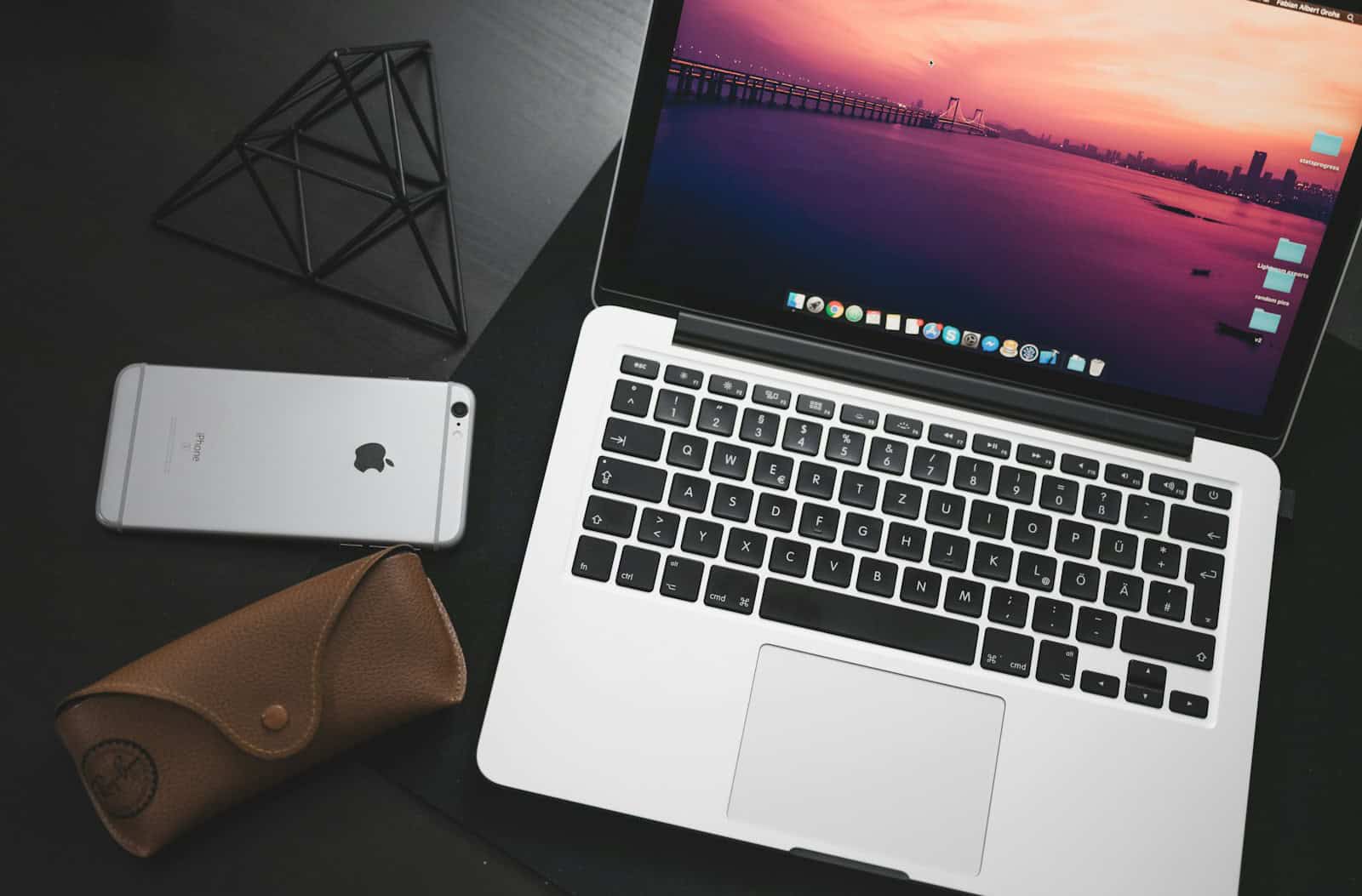Apple is ramping up efforts to launch its first pair of smart glasses by the end of 2026, a move that could reshape the future of wearable technology. According to recent insider reports, the tech giant is shifting gears to prioritize lightweight, AI-powered glasses that will offer core smart features without diving immediately into complex augmented reality (AR).
With this launch, Apple will go head-to-head with Meta’s Ray-Ban smart glasses and Google’s upcoming Android XR platform, signaling a new phase in the battle for dominance in ambient computing.

A New Frontier for Apple: AI Over AR
Unlike earlier rumors suggesting full AR capabilities, Apple’s first smart glasses will focus on artificial intelligence as the main interface. The device is expected to feature:
- Built-in Cameras and Microphones for capturing photos, video, and analyzing surroundings.
- Integrated Speakers for private audio playback, including calls, music, and notifications.
- Siri Voice Control, enabling hands-free operation for tasks like real-time translation, navigation, and setting reminders.
- Custom Apple Silicon based on Apple Watch’s S-series chips, designed to handle AI workloads with low power consumption and minimal heat.
These glasses are being positioned more like an extension of the iPhone or Apple Watch—enhancing daily convenience rather than replacing screens altogether. Apple is reportedly taking a pragmatic approach: enter the smart glasses space with something functional, elegant, and light, and then evolve the product over time toward more immersive AR experiences.
Development Timeline and Production Goals
Apple plans to begin mass-producing prototypes by late 2025, with initial production runs sourced from overseas manufacturing partners. This marks an unusually accelerated development cycle for Apple, which traditionally waits for a product to meet its stringent standards before even hinting at a timeline. The decision to move quickly likely stems from competitive pressure and the rapid evolution of AI-focused consumer tech.
The 2026 launch timeline gives Apple just over a year to refine the hardware, optimize software, and build out the necessary ecosystem integrations across iOS, Apple Intelligence, and Siri. With Apple Intelligence expected to become the brain behind many new Apple products, these glasses could be the first physical embodiment of the company’s new AI-first philosophy.
Strategic Reallocation: Glasses Over Gimmicks

Interestingly, Apple’s decision to shelve a previously rumored smartwatch with an embedded camera points to a shift in R&D priorities. The camera-equipped Apple Watch, which reportedly would have analyzed the surrounding environment for contextual awareness, has been put on ice as Apple redirects focus and resources toward its smart glasses platform. This internal reshuffle underscores just how important the glasses are to Apple’s future in AI-enhanced wearables.
Apple vs. Meta vs. Google: The Race for Your Face
Meta’s Ray-Ban smart glasses, built in partnership with EssilorLuxottica, have proven surprisingly popular thanks to their lightweight design, quality audio, and integration with Meta AI. Google, meanwhile, is quietly building its Android XR platform with help from Samsung and Qualcomm, targeting a blend of AR and AI capabilities.
Apple’s key advantage lies in its ecosystem. If the smart glasses launch as a seamless extension of the iPhone, similar to how AirPods or the Apple Watch work today, the user experience will be instantly familiar—and frictionless. That could give Apple a serious leg up, even if the first generation doesn’t include flashy AR visuals.
Looking Ahead
Apple’s 2026 smart glasses won’t be a revolutionary leap into AR—but that’s not the goal. Instead, they’re likely to serve as a stepping stone: a sleek, AI-powered wearable that blends into your daily life and offers contextual assistance, communication, and content access without taking your phone out of your pocket.
This move may define the next chapter of Apple’s dominance in personal tech. Much like how the AirPods evolved from simple wireless earbuds into spatial audio powerhouses, or how the Apple Watch grew from a notification gadget into a health-monitoring essential, these glasses could become a new category-defining product over the next decade.
With AI now at the center of Apple’s roadmap, the 2026 smart glasses launch isn’t just another product—it’s the beginning of Apple’s wearable future.
Best Affordable VR Headsets
Virtual reality gaming has become more common in recent years, bringing new fun to millions of players. VR lets you step into games rather than just watching them on a screen. The Meta Quest 3S is currently the best budget VR headset for most people in 2025, offering great features at a price that won’t break the bank.
Finding a good VR headset without spending too much can be hard. Some cheap headsets lack good games or don’t work well. Others need an expensive computer to run them. The good news is that a few affordable VR options now exist that work great on their own or with the gaming system you may already have.
1. Meta Quest 3S
The Meta Quest 3S is currently the top choice for budget VR headsets in 2025. It offers excellent value at $300, making it significantly more affordable than many competitors.
This headset brings mixed reality features that were previously only available in more expensive models. Users get color passthrough cameras that let them see the real world while wearing the device.
The Quest 3S has impressive visual quality with 4.5 times the resolution compared to the older Quest 2 model. This improvement makes games and videos look much clearer.
One big advantage is that the Quest 3S works as a standalone device. No computer or console is needed to enjoy VR experiences, though it can connect to a PC for more powerful games.
Many users consider it the best first VR headset for beginners. The setup is simple, and the controls are easy to learn even for people who have never tried virtual reality before.
Battery life runs about 2-3 hours depending on what games or apps are used. This is standard for most VR headsets in this price range.
The Quest 3S comes with access to Meta’s large library of games and apps. Users can find everything from fitness programs to popular games right in the headset’s store.
Comfort is decent for most users. The headset weighs about the same as previous models but has better weight distribution. Most people can wear it comfortably for an hour or more.
For those interested in PC VR gaming, the Quest 3S connects easily to computers. This makes it a versatile choice for gamers who want both standalone and PC-powered experiences.
Reviews consistently rate the Quest 3S as the best budget VR option available now. It hits a sweet spot between affordable price and modern features.
The controllers are responsive and track movement well. They include basic haptic feedback to make games feel more realistic.
Storage options include 128GB in the base model, which holds plenty of games and apps for most users. No memory card slot is available, so buyers should choose wisely at purchase time.
2. PlayStation VR2
The PlayStation VR2 offers gamers a high-quality VR experience at a more affordable price point than many competitors. Recently, Sony dropped the price to just $399.99, making it much more accessible for those wanting to try virtual reality gaming.
This headset connects directly to the PlayStation 5 console, eliminating the need for a powerful gaming PC. The setup is simple and straightforward, perfect for gamers who want to jump into VR without complex configurations.
The PSVR2 features impressive technical specs with a crisp display that reduces the “screen door effect” common in cheaper headsets. Its dual OLED screens provide vibrant colors and deep blacks that make games look stunning.
One standout feature is the innovative PSVR2 Sense technology that adds subtle headset vibrations. These vibrations work with the 3D audio to create a more immersive experience than many headsets at this price range.
Eye tracking technology sets the PSVR2 apart from other budget options. The headset can detect where players are looking, allowing for more natural interaction with virtual environments and potentially reducing motion sickness.
The controllers have been completely redesigned from the original PSVR. They now include haptic feedback and adaptive triggers similar to the PS5 DualSense controller, adding another layer of immersion to games.
Sony’s strong relationship with game developers means the PSVR2 has access to exclusive titles not available on other platforms. Games like Horizon Call of the Mountain showcase what the hardware can do when properly optimized.
For PlayStation fans, the integration with the PS5 ecosystem makes this headset particularly appealing. Switching between regular games and VR experiences is seamless, with no additional software or accounts needed.
Battery life is decent, allowing for several hours of gameplay before needing a recharge. The headset is also fairly comfortable for extended play sessions, with adjustable straps and balanced weight distribution.
The main drawback is that the PSVR2 requires a PS5 console to function. However, for those who already own the console, this represents one of the best value options in VR gaming today.
3. Nintendo Labo Toy-Con 04
The Nintendo Labo Toy-Con 04 VR Kit offers a unique and budget-friendly way to try virtual reality. Released for the Nintendo Switch, this DIY cardboard kit lets kids and adults build their own VR headset and accessories.
What makes this VR option special is its hands-on approach. Users fold and assemble cardboard pieces to create the VR Goggles and other playful accessories like the Blaster. This building process is both fun and educational.
The kit comes in two versions. The Starter Set includes the VR Goggles and Blaster, while the complete VR Kit adds more toys like a camera and elephant trunk controller. Both options cost much less than typical VR headsets.
When it comes to games, the Nintendo Labo VR offers 33 VR videos to enjoy with the standard goggles. These videos help users learn how to use the system in entertaining ways.
The VR experience works by placing the Nintendo Switch console into the cardboard goggles. While the graphics aren’t as sharp as expensive VR systems, they work well enough for most games and activities.
One of the most impressive features is the Toy-Con Garage and Toy-Con Garage VR programming tools. These let users create their own games and experiences, adding huge value for creative minds.
Critics have called the Labo VR Kit a surprisingly solid introduction to VR. It balances fun gameplay with educational elements, making it perfect for families with children.
The kit also supports pass-and-play multiplayer, which means friends and family can take turns using the headset. This social aspect adds to its appeal as a group activity.
Unfortunately, Nintendo has discontinued the Labo VR kits, making them harder to find. However, unused kits can still be found online through various retailers and second-hand shops.
For anyone wanting to try VR without spending hundreds of dollars, the Nintendo Labo Toy-Con 04 remains a solid choice. Its blend of building, playing, and creating offers good value even today.
4. Atlasonix VR Headset
The Atlasonix VR Headset offers an affordable way to experience virtual reality using your existing smartphone. This budget-friendly option works with both iPhones and Android phones that have screen sizes between 4 and 6.3 inches.
One standout feature is its extra-large lenses, which help create a more immersive viewing experience. The headset comes with a bonus remote control that works with Android phones, adding convenience for gaming and navigation.
Users looking for entry-level VR will find the Atlasonix provides decent value. The headset is designed with comfort in mind, featuring adjustable straps to fit different head sizes. This makes it suitable for longer gaming or movie-watching sessions.
The device stands out among cheap VR headsets by focusing on clarity compared to similar models. Its design allows for a good field of view when properly adjusted to the user’s face.
Available in different colors including red, the Atlasonix VR headset is built to be sturdy yet lightweight. The adjustable features help users find the right fit and focus for their eyes.
For those interested in casual VR gaming or watching 3D movies, this headset provides a basic starting point. The product details on the official site highlight its compatibility with popular smartphone models.
Customer reviews on Amazon show mixed feedback, with a rating of about 3.2 out of 5 stars. Some users praise its value for the price, while others mention limitations compared to higher-end VR systems.
The headset can be found on various retail platforms including eBay, where sellers often offer return policies within 30 days. This gives buyers some peace of mind when trying out this budget VR option.
Remember that smartphone-based VR has inherent limitations compared to standalone or PC-connected headsets. The Atlasonix works best for casual use and as an introduction to virtual reality rather than for serious gaming or professional applications.
5. HP Reverb G2
The HP Reverb G2 is a top choice for budget-conscious VR enthusiasts. This headset delivers impressive visuals without breaking the bank.
The G2 features high-resolution LCD screens that create a crisp, clear VR experience. The visual quality rivals more expensive options on the market.
The headset includes audio technology from Valve, providing an immersive sound experience to match the stellar visuals. This partnership has resulted in a more complete sensory experience.
Price is where the Reverb G2 truly shines. It costs almost half of other complete setups, making it an excellent option for those looking to enter VR gaming without spending too much.
For simulator games where players remain seated, the HP Reverb G2 is particularly well-suited. The high resolution makes it perfect for reading small text in cockpit displays.
Comfort matters for extended VR sessions. The G2 features a lightweight design that sits comfortably on the head, even during longer gaming periods.
The tracking system works well for most applications. While not as advanced as some premium headsets, it provides accurate movement detection for the majority of games and apps.
Setup is straightforward with the included hardware. The package comes with everything needed to get started with VR gaming on a PC.
Some users consider the Reverb G2 the best looking VR headset on a budget. The visual fidelity is often cited as its strongest feature.
The headset connects to PCs and offers compatibility with many VR titles. This makes it versatile for various types of gaming and virtual experiences.
Available at major retailers, the HP Reverb G2 remains a competitive option in 2025’s VR market. It strikes a balance between performance and affordability.
Compared to higher-end models like the Valve Index, the G2 offers similar visual quality at a more accessible price point. This makes it a smart choice for new VR users.
6. Oculus Rift
The Oculus Rift was one of the first major VR headsets to hit the consumer market. It helped spark the modern VR revolution when it launched after a successful Kickstarter campaign.
Though older now, the Rift still offers solid VR experiences at a much lower price than newer models. Many users find the headset offers good value for money with its large library of affordable and free VR content.
Unlike standalone headsets, the Rift must connect to a gaming PC. This adds to the total cost but provides better graphics than many budget options.
The display resolution isn’t as sharp as newer headsets, but games still look good enough for most players. The 90Hz refresh rate helps prevent motion sickness during fast movements.
One big advantage of the Rift is its huge game library. Years of development mean hundreds of titles are available, from action games to creative apps.
The controllers feel natural in hand with good button placement. Tracking works well in most room setups with the external sensors properly positioned.
For budget-conscious shoppers, finding a used Rift can be an excellent way to enter VR gaming. Many sell for under $180, making it competitive with the Quest 1 price range that budget shoppers consider.
Support from Oculus (now Meta) has decreased as they focus on newer headsets. This means fewer updates but doesn’t affect the existing game library.
The cable connection limits movement compared to wireless options. Players need to be careful not to tangle or trip over the cable during active games.
Setup takes more time than newer headsets since external sensors need mounting. Once installed properly, the tracking quality remains reliable for most games.
For PC gamers who already have a compatible computer, the Rift represents one of the most affordable ways to experience quality VR. Its balance of price and performance keeps it relevant even as newer options appear on the market.
7. Oculus Rift S
The Oculus Rift S represents a solid mid-range option for PC-powered VR gaming. Released as an upgrade to the original Rift, this headset offers improved visuals and tracking at a price point that won’t break the bank.
The Rift S features inside-out tracking, which means you don’t need external sensors around your room. This makes setup much easier and gives you more freedom to play in different spaces.
Display quality on the Rift S is quite sharp. It uses a single LCD panel with a resolution that eliminates most of the “screen door effect” common in older VR headsets. Users often praise its super sharp display compared to some competitors.
Comfort matters for extended VR sessions, and the Rift S delivers with its halo-style headband. The weight distribution feels balanced, reducing strain during longer gaming sessions.
The controllers that come with the Rift S are intuitive and responsive. They track hand movements well and have a comfortable grip that works for various hand sizes.
At around $400, the Rift S offers what many consider a AAA VR experience without the premium price tag of high-end competitors. This makes it a smart choice for budget-conscious gamers.
The game library accessible through the Rift S is impressive. Players can access titles from both the Oculus Store and Steam VR, giving them hundreds of games and apps to choose from.
Setup is straightforward with the Rift S. The simplified process gets most users up and running in minutes rather than hours, which was common with earlier VR systems.
One downside is that the Rift S requires a gaming PC to function. This adds to the total cost if you don’t already own a VR-ready computer.
The headset is widely available at retailers like Best Buy, making it easy to find and purchase. Some stores even offer demo stations where you can try before you buy.
For those upgrading from older VR systems, the Rift S offers noticeable improvements in clarity and ease of use. However, buyers should note that Meta has shifted focus to their Quest line of headsets for future development.
8. Oculus Quest
The Oculus Quest line has become a leader in affordable VR headsets. Meta (formerly Facebook) has created standalone devices that don’t need a PC or console to work.
The original Quest and Quest 2 paved the way for budget-friendly VR. The Quest 2 offered great value at $299 before being replaced by newer models.
Now, the Meta Quest 3S is considered the best budget headset for most people. It provides an excellent entry point for those new to virtual reality without breaking the bank.
What makes the Quest appealing is its ease of use. Users can simply put it on and start playing without complicated setup procedures. This simplicity helped bring VR to more homes.
The Quest devices offer both standalone functionality and PC connectivity. This flexibility means users can play simpler games directly on the headset or connect to a computer for more demanding titles.
Battery life ranges from 2-3 hours of gameplay. This is enough for most gaming sessions without becoming uncomfortable from extended wear.
The Quest 3 provides better performance than earlier models but costs more at $499. The 3S offers a more affordable option while maintaining good specs.
Game selection for Quest headsets is impressive. Users can access hundreds of titles directly from the Meta store, covering everything from fitness apps to immersive adventures.
The controllers track well and feel natural in most games. Hand tracking is also available for controller-free experiences, though it works best in specific applications.
For simulator fans, the Quest can be a good choice when connected to a PC. Though some users note it lacks a direct DisplayPort connection found in higher-end headsets.
The Quest lineup competes well against options like PlayStation VR2 and more expensive headsets from other manufacturers. They hit a sweet spot of features and price.
Storage options typically include 128GB and 256GB versions. The higher storage is worth considering for users who plan to download many games.
9. Pico 4
The Pico 4 is one of the most affordable VR headsets available today. Starting at around £339 in the UK, it offers great value for those looking to get into virtual reality without breaking the bank.
The Pico 4 has an impressive display quality. It comes with two 2.56-inch Fast-LCD screens that can reach a 90Hz refresh rate. The headset also delivers more than 2K resolution per eye, making games and videos look sharp and clear.
Users who have tried different VR headsets often praise the Pico 4. Many say it beats other models like the Oculus Rift, HP Reverb G2, and Odyssey Plus in key areas. These include resolution, lens clarity, and ease of use.
The Pico 4 works as an all-in-one VR system. This means you don’t need a computer or other devices to use it. Just put it on, and you’re ready to play.
For those who don’t want Meta’s Quest products, the Pico 4 offers a solid alternative. Some versions, like the Pico 4 Ultra, even include light upgrades compared to the Meta Quest 3.
The headset’s design focuses on comfort during long play sessions. Its balanced weight distribution helps reduce neck strain, which is a common issue with many VR headsets.
Game selection keeps growing for the Pico 4 platform. While it started with fewer titles than competitors, the library has expanded to include many popular VR games and experiences.
Battery life runs about 2-3 hours depending on what you’re doing in VR. This sits in the normal range for standalone headsets in this price category.
The controllers that come with the Pico 4 feature precise tracking. This accuracy helps make games more fun and immersive as your real-world movements match what happens in VR.
According to many reviewers, the Pico 4 remains one of the best all-in-one options available. It provides a good mix of features, performance, and price that makes it worth considering for VR beginners and experienced users alike.
10. Meta Quest 3
The Meta Quest 3 stands out as a top choice for VR enthusiasts looking for quality without breaking the bank. Released as an upgrade to previous models, this headset offers impressive features at a competitive price point.
Priced at $499.99 for the 512GB version, it sits in the mid-range of VR headsets. The 128GB version costs less, making it even more budget-friendly for first-time buyers.
The Quest 3 comes with the powerful Snapdragon XR2 Gen 2 processor. This chip delivers twice the GPU processing power of earlier models, resulting in smoother gameplay and better performance.
Many users find the Quest 3 offers good value for money. The visuals are crisp and clear, creating an immersive experience that pulls players into the virtual world.
One major selling point is that the Quest 3 works as a standalone device. No expensive gaming PC or console needed – just put on the headset and start playing.
The mixed reality features set this headset apart from cheaper options. Users can blend virtual elements with their real-world surroundings for unique gaming and productivity experiences.
Game selection is another strong point. The Quest 3 has access to a large library of titles, giving users plenty of options from action games to fitness apps.
Battery life lasts 2-3 hours of active use. While not the longest, it’s enough for most gaming sessions.
The controllers have been redesigned from previous models for better ergonomics. They feel natural in the hands, with responsive buttons and accurate tracking.
Comfort during extended play sessions is decent. The headset weighs less than some competitors, reducing neck strain during longer sessions.
According to some expert reviews, the Quest 3 offers one of the best balances of performance and price in the current VR market. For those who want quality VR without spending thousands, it hits a sweet spot.
When compared to other headsets, the Quest 3 frequently ranks as having excellent value. The combination of no additional hardware requirements, strong processing power, and extensive game library makes it a smart buy.
Understanding VR Technology
Virtual reality technology creates immersive digital experiences by tricking your brain into believing you’re somewhere else. The technology combines specialized hardware and software to create convincing 3D environments you can interact with.
How VR Works
VR works by presenting separate images to each eye, creating a 3D stereoscopic effect that mimics how we naturally see the world. This is called stereoscopic display. The headset tracks your movements and adjusts what you see accordingly.
When you turn your head, sensors in the headset detect this motion. The display instantly updates to show the corresponding view in the virtual world. This process happens many times per second to create smooth, realistic movement.
The best VR headsets use position tracking technology called “6DoF” (six degrees of freedom). This tracks both rotation and position in space, letting you move around freely.
Audio plays a crucial role too. Spatial audio creates the illusion that sounds come from specific locations in the virtual world, enhancing immersion.
Key Components of VR Headsets
Every VR headset contains several essential components that work together to create immersive experiences:
Display: High-resolution screens show the virtual world. Better VR headsets like the Meta Quest 3 offer sharper images with minimal “screen door effect” (visible pixels).
Lenses: Special lenses focus and reshape the display image for each eye, creating a wide field of view and 3D effect.
Tracking System: Sensors track head and sometimes hand movements. These include:
- Gyroscopes
- Accelerometers
- Magnetometers
- External sensors (in some systems)
Processors: Affordable options like the Meta Quest 3S contain built-in computers to process graphics and tracking data independently.
Controllers: Most VR systems include hand controllers with buttons, triggers, and motion sensors for interacting with virtual objects.
Choosing the Right VR Headset
Finding the perfect VR headset means balancing price, features, and comfort. Your choice will impact how much you enjoy virtual reality and how long you can use it without discomfort.
Important Features to Consider
When shopping for an affordable VR headset, resolution should be at the top of your list. Higher resolution means clearer images and less “screen door effect” where you can see the pixels. The Meta Quest 3S offers excellent resolution at a budget-friendly price.
Field of view (FOV) matters too. A wider FOV gives you a more immersive experience. Most affordable headsets offer 90-110 degrees.
Controller tracking is another key feature. Better tracking means your virtual hands match your real movements more accurately. The Meta Quest 3 excels in tracking without needing external sensors.
Consider these technical specs:
- Resolution: Higher is better (1832×1920 per eye minimum)
- Refresh rate: 72Hz minimum, 90Hz preferred
- Storage: 128GB is enough for most users
Don’t forget about content. The Quest platform has the widest game selection, while PlayStation VR2 has exclusive Sony titles.
Comfort and Fit
A headset’s weight affects how long you can play. Lighter headsets (under 500g) are better for longer sessions. The weight distribution matters too – balanced headsets feel lighter than front-heavy ones.
The face cushion material impacts comfort. Foam cushions are common, but premium options use moisture-wicking fabrics that stay cooler during play. Some users add aftermarket cushions for better comfort.
Adjustability is crucial since head shapes vary widely. Look for:
- Adjustable head straps
- IPD adjustment (distance between lenses)
- Ability to wear with glasses
Heat buildup can make VR uncomfortable quickly. Headsets with better ventilation like the HP Reverb G2 keep you cooler during longer sessions.
The right fit prevents light leakage around the edges, which breaks immersion. A proper fit also distributes weight evenly, reducing strain on your face and neck.
Frequently Asked Questions
VR headsets come at many price points with different features. Here are answers to common questions about finding a good VR headset that won’t break the bank.
What are the best budget-friendly VR headsets currently available for PC gaming?
The Meta Quest 3S offers excellent value for PC gamers. It connects to your computer with a link cable and provides a solid VR experience at a lower price than many competitors.
HP Reverb G2 is another good choice for PC gaming. It has impressive visual clarity and comfortable design while staying more affordable than high-end options.
For simulator games where you’ll be seated, the Quest 3 provides good value. One downside is that it lacks a direct DisplayPort connection to your PC.
Which affordable VR headsets are compatible with PS4?
The original PlayStation VR remains the main option for PS4 owners. While older technology, it still offers a decent entry point to VR gaming on PlayStation consoles.
The PlayStation VR2 is a newer, better quality headset. However, it’s important to note it only works with PS5, not PS4.
Third-party headsets for PS4 are limited. Sony’s ecosystem is closed, making the original PSVR the primary affordable choice for PlayStation 4 users.
How do cost-effective VR headsets compare in terms of quality and experience?
Budget VR headsets typically have lower resolution and refresh rates than premium models. This can affect image clarity and potentially cause motion sickness in some users.
The Meta Quest 3S offers good quality for its price point. It provides access to a wide range of games while remaining inexpensive and easy to use.
Controller tracking quality varies significantly. Higher-priced headsets generally offer better tracking accuracy, while budget options might have occasional hiccups during fast movements.
What options do consumers have for inexpensive VR headsets with controllers included?
The Meta Quest 3S comes with two controllers included in the package. This makes it a complete VR system out of the box without needing extra purchases.
Atlasonix VR Headset offers an affordable option that includes basic controllers. It’s an entry-level choice for those curious about VR without a big investment.
Nintendo Labo VR Kit provides a unique cardboard-based VR experience with included controllers. While limited in capability, it’s an inexpensive way for Nintendo Switch owners to try simple VR experiences.
What are the top-rated VR systems offering the best value for their price point?
Meta Quest 3S consistently ranks as the best value headset in 2025. It balances affordability with good performance and doesn’t require a separate computer.
PlayStation VR2 offers excellent value for PlayStation 5 owners. It provides high-quality visuals and immersive experiences while costing less than many PC-based VR systems.
The Oculus Rift S, though older, remains a solid value choice for PC gamers. It offers good build quality, comfort, and controllers at a reduced price due to its age.
Can you recommend some affordable VR headsets suitable for use with smartphones?
Google Cardboard-style viewers remain the most affordable option for smartphone VR. These simple holders turn your phone into a basic VR display for under $20.
Merge VR Goggles offer a durable foam construction that works with most smartphones. They’re comfortable, drop-resistant, and more durable than cardboard alternatives.
VR headsets for phones provide limited experiences compared to standalone or PC-connected options. They’re best for watching 360-degree videos or trying simple VR apps rather than immersive gaming.







